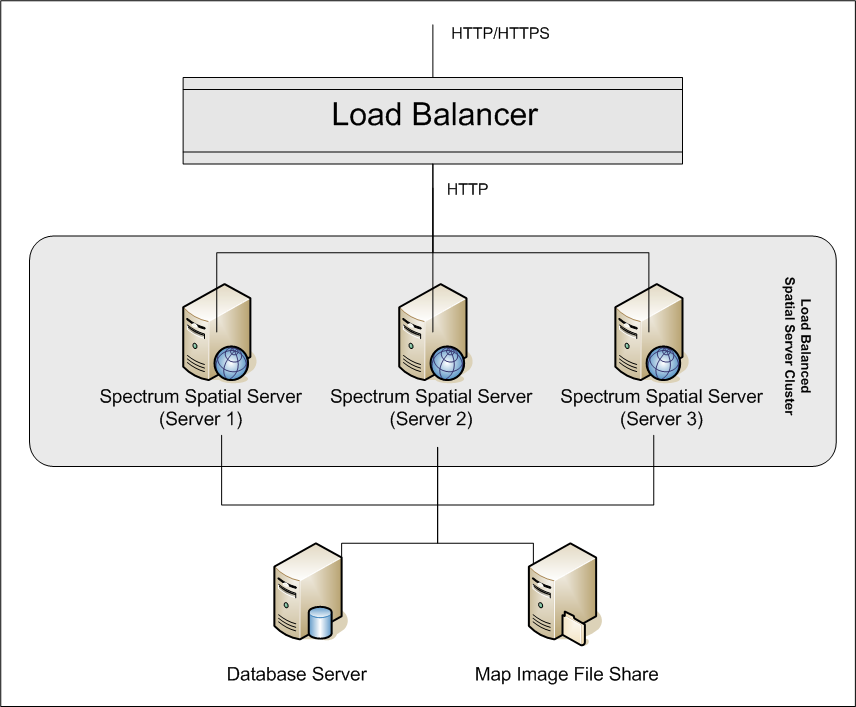Clustered Architecture for Spatial
In a clustered environment, processing is shared among two or more instances of the server. The diagram below illustrates the deployment architecture of such a configuration. Load balancing can be used to support high availability and scaling. The deployment architecture includes a load balancer, a cluster, a database, and a file share. With this approach it is possible to scale both horizontally and vertically. You can cluster Spatial with or without platform clustering.
- Security (ACL) synchronization happens automatically for named resources .
- Dataflows, users, and roles created on one node will automatically synchronize to all nodes.
- All Spatial demo pages and utilities (such as Spectrum Spatial Manager) can and should point to the load balancer.

Load Balancer
The load balancer spreads requests between the instances. Any load balancer that supports load balancing HTTP/HTTPS requests can be used.
Cluster
The cluster is a collection of Spectrum instances with Spatial sharing administration, named resources, geographical metadata content and configuration settings. Additional nodes can be added to the cluster for resilience or to deliver support for greater loads. Each node can be scaled vertically through additional hardware resources and/or additional instances should this be required for hardware with massive resources. Spectrum can be configured to use restricted numbers of CPUs.
Database
Spectrum stores named resources (maps, layers, tables and styles), geographic metadata and configuration in a repository. In the default single server installation an embedded database is used to store these resources on the local server. To create a resilient scalable solution this embedded database should be replaced with a resilient independent database. Oracle, PostGreSQL/PostGIS and Microsoft SQL Server are the supported repository databases.
In the load balanced configuration, Spectrum nodes cache these resources in a local cache and search index in each node in the cluster. When a Spectrum node receives a request it uses the local cache and index to find resources. Named resources can be added through any node in the cluster. Each node keeps its cache current by checking for differences between its local cache and the central database. This check occurs every 2 seconds by default. Time frequency can be configured. This architecture ensures the server delivers high performance transactions and the load on the repository database is kept to a minimum. If a new Spectrum node is added to the cluster the cache and index are created automatically. Such a scenario can occur to remedy a node failure or grow the capability of the deployment.